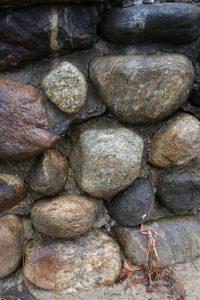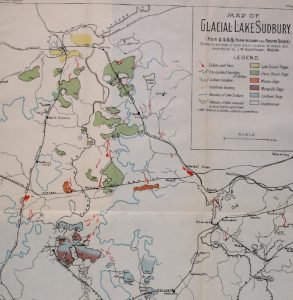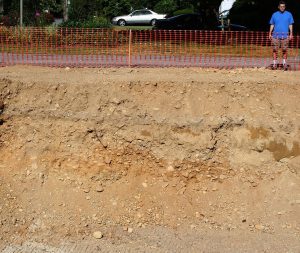Chapter 4 – After the Deluge
Thoreau’s literary career before Walden coincided with the official rejection of the glacial theory by the American science establishment. This blunder –due to cultural conservatism, intellectual patriotism, lack of quantitative rigor, and bad luck– greatly influenced the outcome of Walden. Though confused by these theoretical debates, Thoreau gradually worked out the origin of his local glacial landscape, following the example his new role geological role model, the Charles Darwin he knew from the Journal of Researches.

Boulders of variable composition built into the mortared retaining wall at the northeastern edge of Walden Pond. The boulders were almost certainly locally derived from the construction waste associated with beach and trail "improvements" of the early 20th century. They provide a sample of the very coarse fraction of the glacial meltwater sediment that dominates Walden Woods. Thoreau’s house foundation and his cairn were built of the same stuff.

Historic, hand-colored map published in 1905 by James Walter Goldthwait showing the origin of Walden Pond. The largest green patch near the top (north) is labeled "Walden Delta," an interpretation that remains valid today. Walden Pond is the white spot located just east of the railroad (dark line). Thoreau reached similar conclusions in 1853, following the example of Charles Darwin’s work along the edge of the Patagonian Ice Sheet. Courtesy of the Ernst Mahr Library, Harvard.

Exposure of coarse sandy gravel capping the Walden delta just north of White Pond. Identical material caps the same delta beneath the parking area of Walden Pond State Reservation. Thoreau recognized this as a flat alluvial "shrub oak plateau" of a braided gravel stream, into which a chain of "ponds" was "sunk." The more homogenous upper surface is a combination of wind-blown sand and material re-worked by construction equipment.